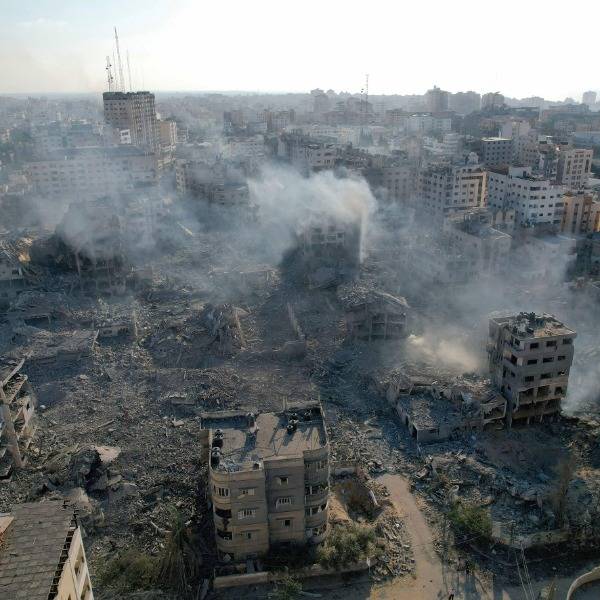Of all the terrible stories of genocide to emerge from the court rooms of the International Criminal Tribunal for Rwanda, it was the one concerning Father Athanase Seromba that caught the imagination of the western media. The first Catholic priest to be brought before the court, Seromba stands accused of having supervised a massacre in which he paid the driver of a bulldozer to demolish his own church at Nyange, in the prefecture of Kibuye in western Rwanda.
It is estimated there were more than 1,500 Tutsi parishioners inside, whole families who had come to his church seeking sanctuary. There were no survivors. The priest had apparently believed the racist propaganda, that had been promulgated by the ideologues of Hutu Power, that all Tutsi should die in order that a 'pure' Hutu state be created.
The special role the Church played in this tragedy isn't confined to Father Seromba, though: between April and July 1994 there were at least 30 large massacres in churches. And while sporadic attention in the press has concentrated on the sins of individuals, exactly how the Catholic Church developed strong links with a racist and violent government has remained shrouded from view.
For almost a century the Church had been an integral part of Rwandan life. The Vatican was one of the most influential and knowledgeable foreign powers in this small, povertystricken African country. Bishops, priests and nuns, both Rwandese and foreign, were involved in Rwanda's politics. The education system in Rwanda was created by the Catholic Church. The former Archbishop, Vincent Nsengiyumva, was for a long time himself a member of the central committee of President Juvenal Habyarimana's ruling party, MRND. According to a 1991 census, 90 per cent of all Rwandans were Christians.
Next to the government, the churches were the largest employers, running social, educational and medical institutions. The churches were more than associated with Rwandan dictatorial regime they were a part of it. For years the churches in Rwanda had tolerated a racist society, and in some churches the racist ideology of the Hutu Power movement had been preached from the pulpit. Catholic and Anglican leaders failed to use their unique moral position among the overwhelmingly Christian population to denounce ethnic hatred and human rights abuses.
In the three years prior to the genocide an estimated 2,000 Rwandans, mainly Tutsi, had been killed in government organised massacres, and while warnings were issued by a few brave priests, the Vatican was largely silent about the racism and brutality.
As far as can be ascertained, the first large scale massacre took place at a Catholic missionary complex in Gikondo, a busy and populated area in Kigali, the capital city. It was here that the word genocide was first used by the Chief Delegate of the International Committee of the Red Cross, Philippe Gaillard, to describe what was happening. Gaillard told me later that what he saw in the church complex in Gikondo on 9 April 1994 he had seen already in the works of Bruegel, and in the cast of monsters descending into the hell of Dante.
A French journalist, JeanPhilippe Ceppi, writing for Libération, also went to Gikondo and that Saturday night Ceppi wrote: "The streets of Gikondo, like all other workingclass places in the city... are filled with assassins, with gunfire and screams of terror." He described gangs of youths, including children, carrying machetes and knives. "The Rwandan army seals the exits and takes part in looting," Ceppi wrote. "The hunt for Tutsi goes from house to house. They are denounced by neighbours and police."
Even after the genocide began, the church remained largely silent. In the first weeks an estimated 10,000 people were murdered every day. The public knew about, and in many cases participated in, the slaughter. But five days into the killing, on Monday 11 April, the bishops of Rwanda had issued a statement in support of the newly created socalled Interim Government, the main instigators of genocide. The bishops' statement also praised the Rwandan army who were "taking to heart the country's security"; this was an army whose soldiers were being ordered to seal the exits where large concentrations of people were sheltering from slaughter.
In obtaining the vital support of the bishops so early on the way was left open for international acceptance of a clearly illegal government. And it was not as if the church didn't know what was going on: the Papal Nuncio, one of the most knowledgeable westerners in Rwanda, was among the first to be evacuated from the country once the killing began.
The responsibility to protect civilians is about much more than coercive military intervention, for the military element is only one of a range of tools available. In Rwanda in 1994 the Catholic Church had a vital role to play in encouraging its priests to resist racism and violence. The responsibility to protect a far better term than 'humanitarian intervention' covers a range of issues including early warning. A strongly worded statement at the outset that the Church would not tolerate organised slaughter would at the very least have informed the world about what was really happening, and given valuable support to those who were pleading for something to be done.

